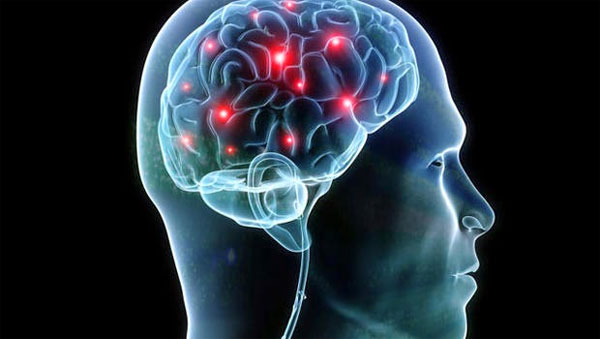10 strange things of the brain
The brain is one of the most complex parts of the human body, with many mysteries that can shock people.
Very fast speed of nerve impulse conduction
The nerve impulse coming and leaving the brain moves at about 273km / h, equivalent to the speed of a large-capacity sports car. Therefore, the human body reacts almost immediately to the surrounding effects.
The active energy is equivalent to a 10W light bulb
Images of light bulbs are often drawn on someone's head when they think of new ideas. The brain consumes energy as a small light bulb even when we are sleeping.
Ability to store large information
Human brain cells can store large amounts of information five times the Britannica Encyclopedia. Scientists have not yet determined the exact capacity of the brain, but it is estimated that between 3 and 1,000 terabytes. Meanwhile, the UK National Archives holds more than 900 years of data when it only accounts for 70 terabytes. This figure shows an impressive memory power of the brain.

The brain is a complex organ in the human body.(Photo: CBS News)
High demand for oxygen
The brain only accounts for about 2% of body weight but consumes 20% of oxygen in the blood, more than any other organ. Therefore, it is very vulnerable to lack of oxygen.
The brain works more at night than during the day
Many people think that movement, complex calculations, work and human interaction during the day make the brain more active than at night. However, the reality is quite the opposite. The scientific community still cannot explain the phenomenon, but according to them, thanks to the activity of the brain during sleep, people can have beautiful dreams.
Smart people dream much
According to researchers, the higher the IQ, the more likely the dream will appear during sleep. However, the average length of dreams usually lasts only two to three seconds, too short for the brain to remember.
Neurons develop throughout human life
Although it does not function in the same manner as tissues in many other parts of the body, neurons are still capable of developing throughout human life. This finding opens up a whole new direction in brain research and brain-related diseases.
Speed of transmission of information varies
Not all neurons in the body are the same. The rate of communication along these different neuron types may be slow (about 0.5m / s) or fast (120m / s).
The brain cannot feel pain itself
The brain is the center of pain when we cut or burn. However, the brain cannot feel pain when it is hurt because there is no receptor for pain.
80% of the brain is water
The brain is not a solid gray mass we often see on television. The brain tissue is very soft, pink, like jelly, because it contains a large amount of water and blood inside.
- Strange things about the body
- Brains - mysterious power source
- Strange stories are true about the human brain
- Interesting things about the brain
- Video: The reason the brain can't do many things at the same time
- The brain can 'look' even though the eyes cannot see
- Strange stories about people without brains
- Doing many things at the same time is not good for the brain
- Does the fly brain work like a human brain?
- You are becoming 'obsessive' because of these habits
- Where does strange perception come from?
- Amazing things about the human brain
 Green tea cleans teeth better than mouthwash?
Green tea cleans teeth better than mouthwash? Death kiss: This is why you should not let anyone kiss your baby's lips
Death kiss: This is why you should not let anyone kiss your baby's lips What is salmonellosis?
What is salmonellosis? Caution should be exercised when using aloe vera through eating and drinking
Caution should be exercised when using aloe vera through eating and drinking Does exercising our minds a lot help us burn excess calories?
Does exercising our minds a lot help us burn excess calories?  How did Egyptian mummies remove the brain from the body?
How did Egyptian mummies remove the brain from the body?  Shocking evidence that near-death experiences are real in people who have had cardiac arrest
Shocking evidence that near-death experiences are real in people who have had cardiac arrest  AI has been able to accurately reproduce more than 80% of images in the human brain.
AI has been able to accurately reproduce more than 80% of images in the human brain.  Neuralink tests controlling a robotic arm with thoughts
Neuralink tests controlling a robotic arm with thoughts  Elon Musk's ambition to merge humans with AI
Elon Musk's ambition to merge humans with AI 